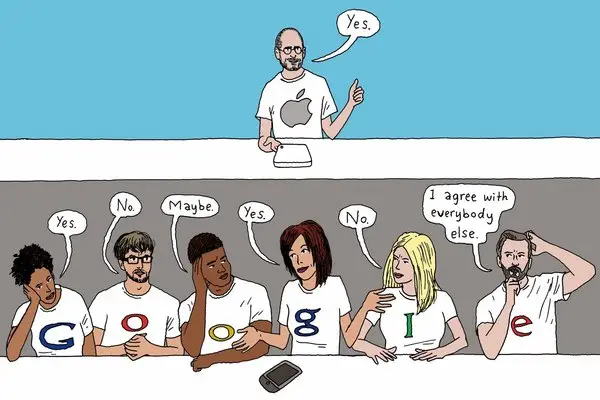The Design Dichotomy
Whether you’re an individual designer or part of a design team or simply someone in a company who has some say in the final design output, you carry with you a heavy question.
“Who is this design for?”
One the one hand, knowing your audience and creating pieces that will resonate is a crucial part of any brand communication.
On the other hand, stepping outside of your authentic self as a company or a designer for the sake of chasing trend can ultimately water down the relationships your brand is working to build.
So there’s your line. Draw it. Paint it. Walk it. But how?
Set the goals of the design first thing.
Here’s where we can fall behind right from the start. All too often the goals for a design project go something like, “we need a label design for this salsa. Make it look awesome. Go.”
Your definition of awesome and my definition of awesome may be completely different. Not to mention the customer might think both of our definitions of awesome are, well, not so awesome.
Good design requires some sense of space for creativity, sure, but some context and direction is just as important. What are the goals for our new salsa label? Just to be awesome? That’s too broad. Do we want it to stand out on the shelf? Speak to our fresh ingredients? Prepare people for just how stupid hot it is? Are we marketing to the buyer who cares about locally sourced or organic?
Thinking about and documenting all of the requirements and considerations in a creative brief takes some of the guesswork out and gets you thinking about your audience.
Ask yourself what you bring to the design table.
This is where we shift focus for a bit from the recipient to the messenger. Reflect on your collective works for a moment. What are the consistencies in your design that you want to carry through to this project? Are there brand characteristics to be considered? Especially if this is part of a brand extension.
Remember, “a camel is a horse designed by a committee.”
Internal meetings happen. Client meetings happen. Opinions happen. And often times in these “happenings” design by committee can be the result. It’s important to establish a filter for the noise. Ideally this can start in the Goals Phase by only having the people involved who absolutely need to be involved in the design process and when it comes down to it, trust has to be placed on the right person to make the final edits.
The NY Times wrote a piece a few years ago about the difference in design approach between Apple and Google. It’s nicely summed up in the photo below but the full article is well worth the read.

You can’t be everything to everyone and you shouldn’t. That holds more true for design than possibly anything else because when you set out to create something for everyone to love chances are no one will. So who are you designing for?
Photo credit: ANGELOUX via Compfight
Adapted by Shout Out Studio
Illustration via NY Times / Peter Arkle

